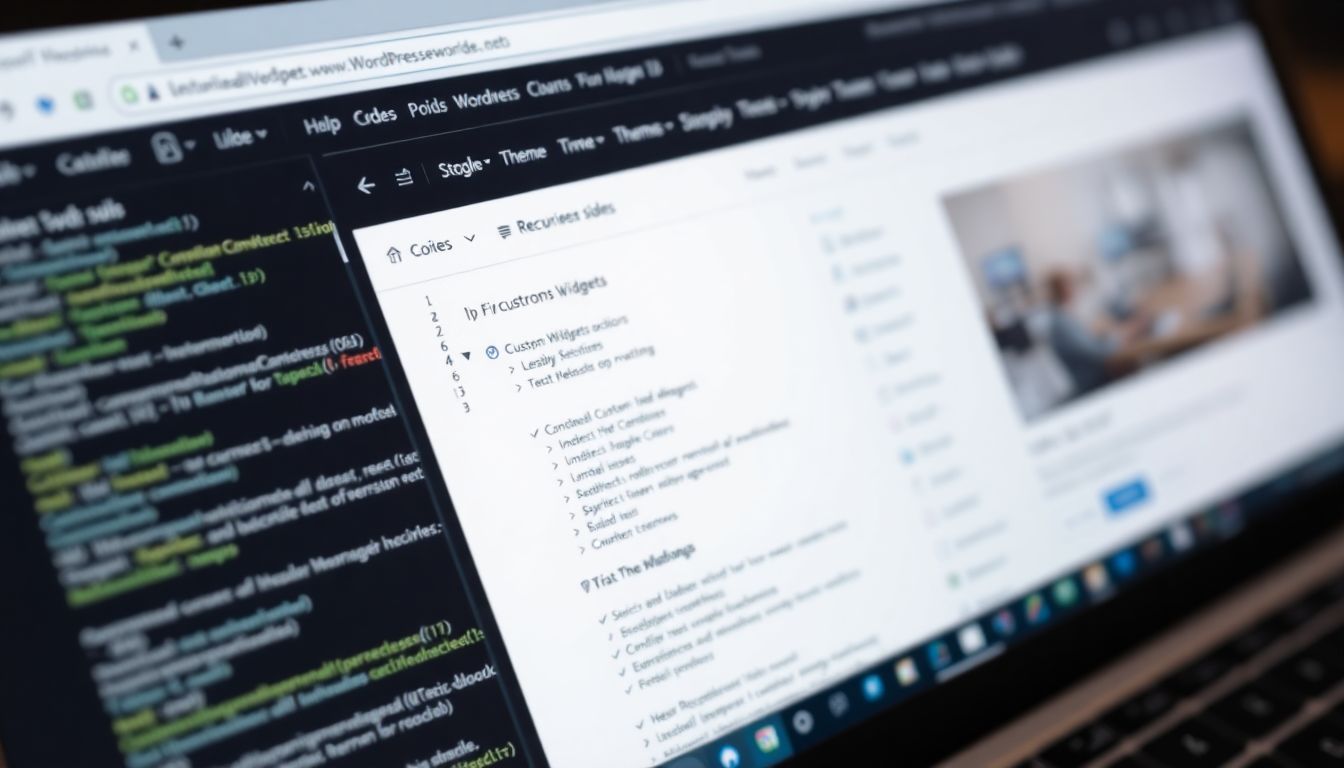WordPress Development: A Comprehensive Guide to Building Powerful Websites
WordPress Development: A Comprehensive Guide to Building Powerful Websites
WordPress is a big deal. It powers over 40% of the internet! All those amazing themes and plugins? They come from WordPress development. Ready to learn to code and make awesome websites?
This guide will help you become a great WordPress developer. New or experienced, you’ll learn what you need. We’ll look at tools, tips, and tricks to build great WordPress sites.
Want to create your own themes? How about build powerful plugins, or make existing sites better? Then you’re in the right place. Lets get started.
Understanding the WordPress Core
The heart of WordPress is its core. This is the base everything else builds on. We’ll look at what makes it tick.
WordPress Architecture Explained
WordPress has layers, like an onion! The core is the innermost layer. Themes change how it looks. Plugins add extra features. They all work together.
The database holds all your site info. Tables store posts, pages, users, and more. These tables are linked. This makes finding and using info easier.
Key WordPress Files and Directories
WordPress has key files and folders. wp-config.php holds your database settings. wp-content stores themes, plugins, and uploads. wp-includes contains core files. .htaccess controls how your server works. index.php is the main file that loads your site. Knowing these helps you navigate WordPress.
WordPress Coding Standards
Good code is key in WordPress. Follow the rules! This makes your code easy to read and work with. WordPress has standards for PHP, HTML, CSS, and JavaScript. You can find them on the official WordPress site. Coding standards makes teamwork easier.
Setting Up Your Development Environment
Want to build without messing up your live site? Use a local development environment. It’s a safe space to test things out. Let’s learn how to make one.
Choosing a Local Development Tool
Several tools can help you build a local WordPress site. XAMPP is free and popular. MAMP is similar, especially for Macs. Local by Flywheel (now LocalWP) is easy to use. Docker is more advanced. Each has pros and cons. Pick what works best for you.
Installing WordPress Locally
Installing WordPress locally is easy. First, download WordPress. Then, create a database. Next, put the WordPress files in your local server’s folder. Open your browser and go to localhost. Follow the steps to set up WordPress. Now you have a local site to play with!
Configuring Your Code Editor
A good code editor makes coding easier. VS Code is a popular choice. Sublime Text is fast and simple. Atom is customizable. Get plugins for WordPress. PHP Intelephense helps with PHP code. WordPress Snippets adds useful shortcuts. A good editor makes a difference.
Theme Development: Crafting Unique Designs
Themes control how your site looks. Want a custom look? Learn to build your own theme.
Building a Basic Theme from Scratch
Let’s make a simple theme. You need a style.css file for styles. index.php shows your homepage. header.php holds the top of your site. footer.php holds the bottom. WordPress uses a template hierarchy. This tells it which file to use for each page. This makes your theme structure easy to understand.
Utilizing Template Tags
Template tags show dynamic content. the_title() shows the post title. the_content() shows the post content. the_permalink() shows the post link. get_header() loads the header. get_footer() loads the footer. Use these to build your theme.
Customizing Themes with the WordPress Customizer
The WordPress Customizer lets you add theme options. You can change colors, fonts, and layouts. Use the Customizer API to add settings. This makes it easy for users to tweak their site.
Plugin Development: Extending WordPress Functionality
Plugins add extra features to WordPress. Want to add a contact form? Or maybe an image gallery? Build a plugin!
Plugin Structure and Best Practices
Plugins have a simple structure. The main file is the plugin’s brain. Folders hold includes, assets, and more. Comment your code well. Keep it organized. This makes it easy to maintain and update.
Working with WordPress Hooks (Actions and Filters)
Actions and filters are powerful. They let you change how WordPress works. add_action() runs code at specific times. add_filter() changes data. Use these hooks to customize WordPress.
Creating Custom Post Types and Taxonomies
Custom post types let you create new types of content. Think “Books” or “Movies.” Taxonomies are like categories and tags. Use register_post_type() and register_taxonomy() to make them. Then, show them in your theme.
Advanced WordPress Development Techniques
Ready for more? Let’s dive into advanced topics. These will make you a WordPress pro.
Working with the WordPress REST API
The WordPress REST API lets you access data. You can get posts, pages, and more. Use it with JavaScript frameworks like React or Vue.js. This opens up a world of possibilities.
Optimizing WordPress Performance
A fast website is a happy website. Use caching to speed things up. Optimize your images. Clean up your code. Optimize your database. Plugins can help with this. Performance is key.
Security Best Practices
Security is vital for WordPress. Protect your site from hackers. Use strong passwords. Keep WordPress updated. Use security plugins. Watch out for SQL injection and cross-site scripting. Be safe online.
Conclusion: Your Journey into WordPress Development
WordPress development lets you build great websites. Learn the core, themes, and plugins. Practice advanced tricks. Keep learning and experimenting. Join the WordPress community. You’ll become a WordPress master.







